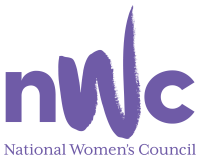‘Women and Men in Ireland’
Published: Wednesday, July 30, 2014
Tue, 29 Jul 2014
Today’s publication of the annual CSO Women and Men in Ireland Report has been welcomed by the National Women’s Council of Ireland (NWCI).
“The annual Women and Men in Ireland Report is an essential resource in monitoring the position of women and men across a range of areas. The 2013 report produced today clearly illustrates the ongoing under-representation of women in the work force in Ireland, the imbalance in terms of caring work in our society and the need for concrete measures to increase womens representation in senior roles and decision making ” said Orla O’Connor, Director of NWCI.
“The report shows that women are still responsible for providing the majority of care with 98.2% of those looking after home or family being women. This clearly impacts on women’s labour force participation and affects the nature of their employment including the kinds of work women are accessing.”
Ms O’Connor highlighted that “strikingly, while 85% of women in a relationship without children are working – this figure plummets to 51.7% for women who have a youngest child between 4 and five years age. This is a drop of over 33% compared with a drop of 10% for men
These figures reinforce the serious concerns expressed by the EU in recent Country Specific Recommendations for Ireland, which highlighted the lack of adequate, accessible and affordable childcare as one of the reasons women are falling out of the workforce.” The lack of adequate childcare is also a serious factor in driving many women into part-time work, often precarious and low-paid. The report shows that three times as many women as men are working 29 hours or less per week.
“The constraints of juggling work inside and outside the home, often mean that, despite better educational qualifications, women are still likely to end up earning less. The report shows women earning 73.5% of men's income overall and earning on average 14.4% less per hour.
The fact remains that many women are taking home and living on less. More than half (50.3%) of women earn €20,000 or less and just under one in ten (9.5%) women earn over €50,000 as compared with almost two out of ten men (18.2%)” added Ms O’ Connor.
Ms O’Connor also noted “The report also highlights the persistent underrepresentation of women in senior or decision making roles both in the political and public sphere. Ireland has just 15.7% of women in the Dail and just 2 out of 17 Secretary Generals of Government Departments despite the fact that two thirds of those employed in public service are women.
It is also of concern to see the continuing problem of gender division in both established and emerging employment sectors, this is something that needs to be addressed in all aspects of the Government’s employment, education and activation policy,”.
